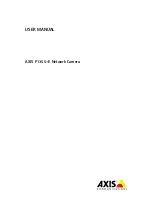
18
Startup Procedure
Section 2-2
Note
When changing the baud rate of the master after starting the DeviceNet Com-
munications Unit, turn ON the communications power supply of the DeviceNet
Communications Unit again, and restart the Unit.
2-2-2
I/O Allocation Using the Configurator
Use this method for any of the following situations.
• To select any parameters (such as PID constants) or status information,
apart from the Temperature Controller set points (SPs), process values
(PVs), or alarm outputs, and allocate words for them in the master (up to
100 words each in the IN Area and OUT Area).
• To allocate data in any order.
• To use remote I/O communications to allocate only data that is always
required in the master and not allocate unnecessary data.
Note
Up to 100 words each can be allocated in the IN Area and OUT Area for
remote I/O communications. To read and write larger amounts of data, use the
following procedure.
• Use expansion remote I/O.
• Use explicit message communications. Also write data using explicit mes-
sage communications for data that is written only when required.
• Use multiple DeviceNet Communications Units and distribute the number
of Temperature Controllers connected to each DeviceNet Communica-
tions Unit.
15
Start remote I/O communications.
Enable the master's scan list and change the PLC to
RUN Mode.
Remote I/O communications will start, and the contents
of the IN and OUT Areas in the master and DeviceNet
Communications Unit will be synchronized.
---
Using explicit message communi-
cations
Send explicit messages from the master.
Explicit messages can be used to perform control and
monitoring that cannot be achieved using the IN and
OUT Areas alone, by sending explicit messages to the
DeviceNet Communications Unit.
104
16
Set the initial settings or monitor
the Temperature Controller.
With the Configurator online, perform Temperature Con-
troller initial settings or monitoring from the Edit Device
Parameters Window for the DeviceNet Communications
Unit.
93
17
Upload the parameters of the Tem-
perature Controller to the
DeviceNet Communications Unit.
When the system has started normally, upload (backup)
all the parameters to the DeviceNet Communications
Unit in case of Temperature Controller malfunction. Cre-
ating a backup copy of the parameters will allow parame-
ters to be easily reset onsite after a Temperature
Controller has been replaced, without requiring a Config-
urator.
Procedure: Turn OFF pin 3 of the DIP switch of the
DeviceNet Communications Unit, turn ON pin 6 (1 to
5 s), and then turn it OFF again.
25 and 141
Step
Item
Details
Reference
page
Содержание EJ1 - 07-2008
Страница 1: ...DeviceNet Communications Unit for EJ1 Temperature Controllers Cat No H155 E1 02 OPERATION MANUAL...
Страница 2: ...DeviceNet Communications Unit for EJ1 Temperature Controllers Operation Manual Revised July 2008...
Страница 3: ...iv...
Страница 19: ...xx...
Страница 33: ...14 Initial Temperature Controller Settings Section 1 4...
Страница 53: ...34 Wiring the Temperature Controllers Section 3 4...
Страница 101: ...82 Ladder Programming Examples Section 4 6...
Страница 143: ...124 Sending Explicit Messages Section 6 5...
Страница 155: ...136 Message Communications Characteristics Section 7 2...
Страница 163: ...144 Maintenance Section 8 2...
Страница 189: ...170 Allocation Numbers for Configurators Manufactured by Other Companies Appendix B...
Страница 197: ...178 Index...















































